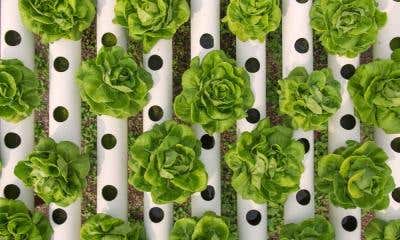Cultivating cannabis requires careful management of water resources to maintain optimal plant health and productivity. Reservoir recycling and reusing techniques aim to maximize the efficiency of water usage and minimize the consumption of freshwater resources. By implementing these techniques, cultivators can contribute to sustainable cultivation practices and minimize the environmental footprint of their operations.
Reservoir Recycling and Reusing Techniques
-
Nutrient Solution Monitoring: Regular monitoring and testing of the nutrient solution in the reservoir help ensure its quality and viability for reuse. By maintaining proper pH levels, nutrient concentrations, and conductivity, cultivators can extend the lifespan of the nutrient solution and reduce the need for frequent changes.
-
Water Treatment and Filtration: Implementing water treatment and filtration systems can help remove impurities, contaminants, and pathogens from the nutrient solution, making it suitable for reuse. Techniques such as reverse osmosis, UV sterilization, and carbon filtration can be employed to maintain water quality.
-
Reservoir Flushing: Flushing the reservoir between crop cycles helps remove excess nutrient buildup and prevent nutrient imbalances. This practice promotes cleaner and healthier nutrient solutions for subsequent crops, allowing for effective recycling and reusing.
-
Water Conservation Strategies: Implementing water conservation strategies, such as implementing drip irrigation systems, minimizing evaporation, and optimizing watering schedules, helps reduce water consumption. By using water efficiently, cultivators can minimize the need for frequent reservoir changes and promote sustainability.
-
Proper Cleaning and Maintenance: Regular cleaning and maintenance of reservoirs are essential to prevent contamination and ensure optimal functionality. Thoroughly cleaning and sanitizing the reservoirs between crop cycles prevent the buildup of algae, bacteria, and other microorganisms, maintaining a healthy and reusable environment.
-
Reservoir Integration with Environmental Control Systems: Integrating the reservoir system with environmental control systems, such as automated irrigation and nutrient delivery systems, allows for precise control of water and nutrient application. This integration helps optimize resource usage, prevent wastage, and enhance overall cultivation efficiency.
Benefits of Reservoir Recycling and Reusing
-
Water Conservation: Reservoir recycling and reusing techniques significantly reduce water consumption in cannabis cultivation. By reusing nutrient solutions, cultivators minimize the need for continuous freshwater intake, preserving this valuable resource.
-
Waste Reduction: Implementing recycling and reusing techniques reduces waste associated with frequent reservoir changes and nutrient solution disposal. This contributes to a more sustainable cultivation practice by minimizing environmental impact.
-
Cost Savings: By recycling and reusing nutrient solutions, cultivators can reduce the cost of purchasing and replenishing fresh nutrient solutions. This cost-saving aspect benefits both small-scale and large-scale cultivation operations.
-
Environmental Stewardship: Reservoir recycling and reusing techniques align with the principles of environmental stewardship, promoting sustainable cultivation practices and reducing the ecological footprint of the cannabis industry.
Reservoir recycling and reusing techniques are essential components of sustainable cannabis cultivation. By implementing these practices, cultivators can conserve water, reduce waste, and promote environmental stewardship. With proper monitoring, treatment, and maintenance, cultivators can effectively recycle and reuse nutrient solutions, contributing to a more sustainable and responsible approach to cannabis cultivation.
















